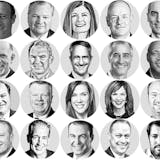Late August is upon us, and with it, all the regularities of a waning summer: pilgrimages to the Minnesota State Fair, a final sojourn at the cabin, Vikings fans anticipating the opener, and kids heading back to school.
Oh, and add one more to the list — tennis pros limping into New York for the U.S. Open.
From the first days of January, players have been traveling all over the world, training and competing week after week, desperately trying to win, and most especially at this time of the year, desperately trying to stay healthy.
After spending spring and early summer on natural surfaces like clay and grass where there is a bit of give and glide, players make the jarring transition to the hard courts of the American summer series of tournaments. And they start dropping like flies.
An overstatement? Consider that three of the four men's semifinalists at last year's U.S. Open — winner Stan Wawrinka, finalist Novak Djokovic and Kei Nishikori — will not even be taking the court due to injuries (in fact, they are done for the year). Neither will past champ Andy Murray, who unexpectedly withdrew Saturday because of a hip injury, or big-serving Canadian Milos Raonic. 2014 winner Marin Cilic will be in the draw, but this will be his first tournament since hobbling out of the Wimbledon final.
That makes six of the top 11 who are either nicked up or knocked out.
It's easy to blame the hard courts and the endless tournament schedule — and they certainly contribute — but truth be told, players' bodies are already groaning before they step foot Stateside. The traumatic tears and breaks that occur in contact sports like football and hockey are rare in tennis. More common are repetitive use injuries that come after the millionth forehand or lunge, causing elbows and knees to inflame. Simply put, players often push themselves beyond the invisible line dividing healthy from hurt.
How ironic then that the man with arguably the most miles and years behind him, 36-year-old Roger Federer, is not only fit enough to compete in his 17th U.S. Open, but is the favorite to win it.


